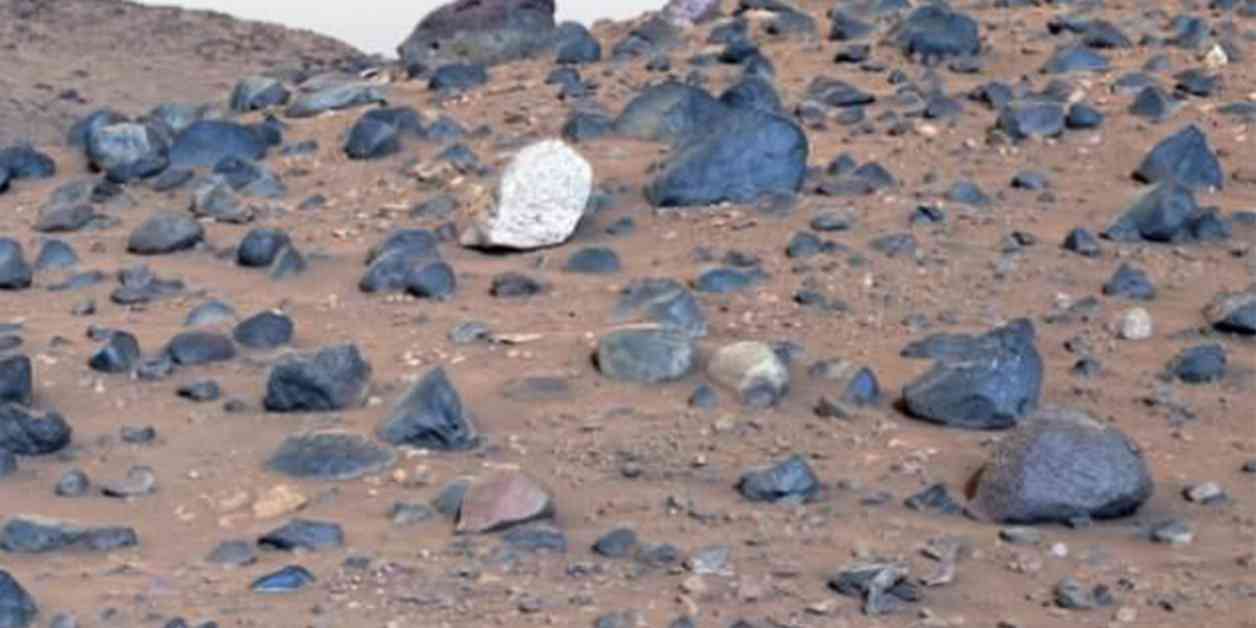NASA recently shared the most detailed images of Mars ever seen, revealing the presence of blue rocks scattered throughout the planet’s surface. These images were captured by the Perseverance rover during its exploration of Mars. The dark blue, jagged rocks identified as volcanic basalt were found on top of the remnants of an ancient lakebed. This discovery was made on “Mount Washburn,” a rocky area within the Jezero crater believed to have once housed an ancient lake billions of years ago.
In addition to the blue volcanic basalt rocks, the rover also encountered a white-striped rock among the blue boulders. The Perseverance science team named this light-toned boulder with dark speckles “Atoko Point.” Surprisingly, further analysis revealed that “Atoko Point” is composed of anorthosite, a silica-rich volcanic rock never before observed on Mars. This discovery challenges previous theories about the Martian landscape and opens up new possibilities for exploration.
The name “Mount Washburn” was chosen as a tribute to a mountain in Yellowstone National Park, highlighting the significance of this rocky field within the Jezero crater. Scientists are excited about the potential for more unique rock formations in the area and are eager to investigate further.
The presence of these distinct rock types on Mars raises questions about the planet’s geological history and provides valuable insights into its past. The Perseverance rover continues its mission to explore the Martian surface and uncover more secrets that could reshape our understanding of the Red Planet.
As we await more updates from NASA’s ongoing mission to Mars, the discovery of blue and white rocks on the planet’s landscape serves as a reminder of the endless possibilities and mysteries that lie beyond our own planet. The exploration of Mars continues to captivate the world and inspire future generations of scientists and explorers.




